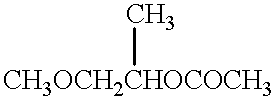Micropump and method of using a micropump for moving an electro-sensitive fluid
a micropump and electro-sensitive technology, applied in the direction of pumping plants, generators/motors, transportation and packaging, etc., can solve the problems of heterogeneous fluids with poor dispersion stability, high cost of liquid crystal compounds, and variable properties of fluids, so as to reduce friction and reduce friction
- Summary
- Abstract
- Description
- Claims
- Application Information
AI Technical Summary
Problems solved by technology
Method used
Image
Examples
example 1
A SE type ECF motor having a structure shown in FIG. 2(A) was fabricated. That is, as a fluid container of the SE type ECF motor, a cylinder having an inner diameter of 16 mm and a depth of 3.5 mm was used. The bottom surface of the cylinder and the lower surface of a lid each was provided with four pairs of electrodes in such a manner that the angle between a pair of electrodes (positive electrode and negative electrode) was 22.5.degree. and the angle between the adjacent positive electrodes was 90.degree..
A circular film having a rotating shaft at its center and having a diameter of 15 mm was used as a rotator. As the flow receiving members, 8 convex bars each having a section of right-angled triangle were attached to the upper surface of the circular film, and 8 convex bars having the same section as above were attached to the lower surface of the circular film (total number of bars: 16).
The fluid container was filled with 16 ml of dibutyl decanedioate (DBD).
Then, a direct-curren...
example 2
The SE type ECF motor was driven in the same manner as in Example 1, except that the rotator having a flow receiving member consisting of 16 convex bars was replaced with a rotator having a flow receiving member consisting of 8 convex bars (4 convex bars each having a section of right-angled triangle attached to the upper surface and 4 convex bars having the same section attached on the lower surface). As a result, the SE type ECF motor underwent steady rotation at 340 rpm, and the rotational direction was the same as in Example 1.
example 3
The SE type ECF motor was driven in the same manner as in Example 1, except that linalyl acetate was used in place of the dibutyl decanedioate (DBD). As a result, the SE type ECF motor underwent steady rotation at 740 rpm, the intensity of the current was 1.8 .mu.A, and the rotational direction was the same as the flow direction of the linalyl acetate (i.e., direction of the positive electrode to the negative electrode).
PUM
 Login to View More
Login to View More Abstract
Description
Claims
Application Information
 Login to View More
Login to View More - R&D
- Intellectual Property
- Life Sciences
- Materials
- Tech Scout
- Unparalleled Data Quality
- Higher Quality Content
- 60% Fewer Hallucinations
Browse by: Latest US Patents, China's latest patents, Technical Efficacy Thesaurus, Application Domain, Technology Topic, Popular Technical Reports.
© 2025 PatSnap. All rights reserved.Legal|Privacy policy|Modern Slavery Act Transparency Statement|Sitemap|About US| Contact US: help@patsnap.com



